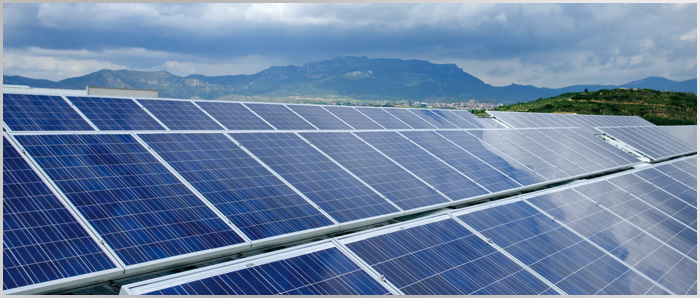
CONSULTING FIRM SYSTEP ALSO ESTIMATES THAT THE MARGINAL COST IN THIS AREA COULD DROP TO LEVELS INCOMPATIBLE WITH THIS ENERGY.
Alert for NCRE oversupply in northern SIC due to lower power demand projection
Restrictions in transmission capacity threaten to turn this point of the system into a local market, where – eventually – the price would not depend on diesel.
By: Jéssica Esturillo O.
Source: Diario Financiero
Friday, February 21, 2014 | 08:00 am
The numerous Non-Conventional Renewable Energy (NCRE) initiatives planned to be installed in the northern part of the Central Interconnected System (SIC) face a triple threat.
The consulting firm Systep reports the complications that the developers of this type of energy -especially solar and wind- would have due to the combined action of the restrictions in the transmission capacity in that area, the lower prospects for the growth of electricity demand and also the eventuality of a drop in local energy costs.
In its most recent report, the office headed by academic Hugh Rudnick warns of a risk of an oversupply of NCRE generation in the northern part of the SIC, if all the capacity of this type that has environmental permits (3,940 MW) is actually installed.
They add that problems would arise even if only the 1,327 MW (805 MW solar and 522 MW wind) that -between the southern area of the Antofagasta Region and the Coquimbo Region- started the process before the Economic Load Dispatch Center (CDEC) to request their connection to the SIC were connected.
Isolated market
The danger, they add, is that because of bottlenecks this section of the grid could become a local market, where energy prices could be lower than had been projected until some time ago, which would call into question the numbers behind this energy.
This drop in marginal costs would be due to the entry of generation with more efficient prices, such as those derived from the operation of Endesa’s Taltal power plant with natural gas, which would displace diesel.
Systep explains that the large volume of NCRE projects at this point of the SIC responded to the phenomenon of suspension or cancellation of major conventional thermal generation projects in recent years, coupled with transmission restrictions in a scenario of increased industrial consumption, allowed to anticipate a future situation of high marginal costs for this area of the SIC.
However, in practice what happened, they say, is that the absence of cheap energy led to the delay or suspension of mining projects that were in the pipeline, which slowed demand growth expectations in the north of the SIC.
“Before the new backbone transmission works come into service, if a significant number of NCRE projects are developed in the area, and at the same time new mining projects are postponed, it is possible that price decoupling between the northern SIC and the rest of the system could occur. This could lead to low spot prices at times when NCRE generation is coincident and higher prices when it is not available,” the report says.
The executive president of the Chilean Renewable Energy Association (Acera), Carlos Finat, said he shared Systep’s analysis, although he played down the drama of the threat. He added that CDEC could implement devices to increase the capacity of the lines without risking the safety of the network.
At the same time, he said, the CDEC has not included new methodologies to anticipate the behavior of NCRE in order to adapt the operation of conventional technologies, which would help to avoid these problems.






